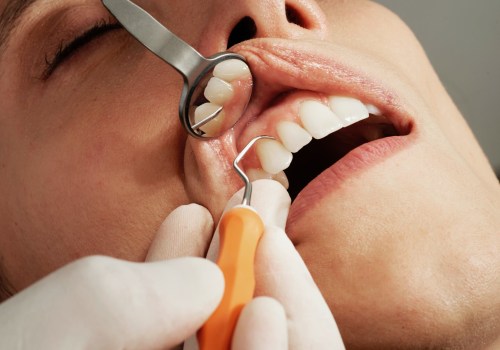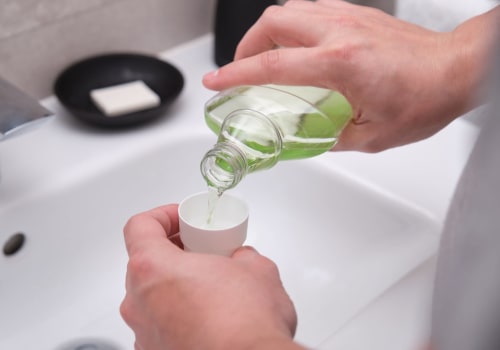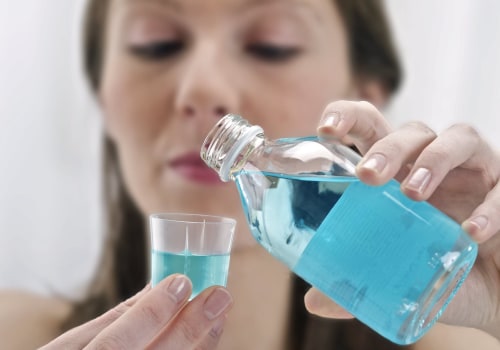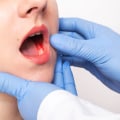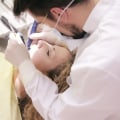Good dental care and hygiene is essential to maintain healthy teeth and gums. One of the most important aspects of this is brushing techniques. Knowing the right way to brush your teeth can make a huge difference in your oral health. In this comprehensive overview, we will discuss various brushing techniques and how they can help keep your mouth healthy. We will explore the different types of brushes available, the best ways to use them, and the benefits they offer.
We will also look at the importance of flossing and other preventative measures that can help you maintain a healthy smile. Finally, we will discuss how to choose the right brushing technique for you and your family. Whether you are just starting out with good dental care or looking to improve your existing routine, this article will provide valuable information to help you achieve optimal oral health. The first step in brushing your teeth correctly is to choose the right toothbrush. Manual or electric toothbrushes can both be effective in removing plaque and debris from your teeth. When choosing a toothbrush, it's important to select one with soft bristles that won't damage your gums or enamel.
Once you have chosen a toothbrush, you will need to learn the proper brushing technique. This includes using gentle circular motions and making sure to brush all surfaces of each tooth, including the back and sides. It's also important to brush your tongue, as this can help remove bacteria that can lead to bad breath. Additionally, make sure to replace your toothbrush every three months for optimal results. In addition to brushing, flossing is also an important part of maintaining good dental health.
Flossing helps remove debris and plaque from between teeth where a toothbrush can't reach. When flossing, make sure to use a gentle sawing motion and be sure to floss both sides of each tooth. Finally, it's important to use a fluoride toothpaste when brushing your teeth. Fluoride helps protect your teeth from decay and can help strengthen them. When selecting a toothpaste, make sure to choose one with the American Dental Association (ADA) seal of approval, as this indicates that the product has been tested and approved for safety and efficacy. Finally, it's important to brush your teeth twice a day for two minutes each time.
This will help remove bacteria and plaque and help keep your teeth healthy. Brushing correctly with the right techniques and products is key to maintaining good dental health and keeping your smile looking its best.
Flossing
In addition to brushing, flossing is also an important part of maintaining good dental health. Flossing helps remove plaque and food particles that can build up between the teeth and along the gum line, where a toothbrush may not be able to reach. When flossing, it's important to use a gentle sawing motion and to make sure to floss both sides of each tooth.Be sure to go carefully around the gum line, but do not press too hard. It's also important to use a clean length of floss each time you floss, and to replace your floss regularly. If you have difficulty using regular floss, there are other types of flossing aids available such as water flossers or special brushes.
How Often Should You Brush?
Brushing your teeth is an essential part of maintaining good dental health. It is recommended that you brush your teeth twice a day for two minutes each time. Doing so will help remove plaque and bacteria that can damage your teeth and cause cavities, gum disease, and other dental problems. It is important to brush your teeth twice a day for two minutes each time in order to effectively remove plaque and bacteria.Brushing your teeth too often can actually cause harm to your enamel, while brushing too little can lead to plaque buildup and tooth decay. Therefore, it is important to brush your teeth twice a day for two minutes each time in order to maintain good dental health. In addition to brushing your teeth twice a day for two minutes each time, it is important to floss and use mouthwash to help keep your teeth and gums healthy. Flossing helps remove food particles that are stuck between your teeth, while mouthwash can help reduce plaque and bad breath. By combining regular brushing with flossing and mouthwash, you can help maintain good dental health.
Choosing the Right Toothbrush
Choosing the right toothbrush is an essential part of maintaining good dental health.A toothbrush should have soft bristles, which won’t damage your gums or enamel. The handle should be comfortable and easy to hold, and the brush head should be small enough to reach all areas of the mouth. When selecting a toothbrush, it is important to consider the size of your mouth and the size of your teeth. For adults, the American Dental Association (ADA) recommends a toothbrush with a head that is one-half to one inch in width.
For children, a toothbrush with a small head is best. The type of toothbrush can also be important. Manual toothbrushes are often more effective than electric ones, as they allow you to manually control the pressure applied to the teeth and gums. Electric toothbrushes can be used for those who have difficulty brushing with a manual brush.
In general, manual toothbrushes are cheaper and more environmentally friendly than electric ones. It is important to replace your toothbrush every three months or after an illness. To ensure that your toothbrush remains clean and free of germs, it should be kept in a dry place away from the bathroom sink.
Using Fluoride Toothpaste
Using a fluoride toothpaste when brushing your teeth is an essential part of maintaining good dental health. Fluoride is a naturally occurring mineral found in water and some foods.It helps to strengthen the enamel on your teeth, making them more resistant to decay. Fluoride also helps to remineralize any areas of the tooth that have been damaged by decay. When brushing your teeth, it's important to use a toothpaste that contains fluoride. This will help protect your teeth from cavities and other oral health issues. Look for toothpastes that contain the ADA seal of acceptance, which means they have been tested and approved for safety and effectiveness.
Additionally, you should try to use a toothpaste that contains the right amount of fluoride for your age and needs. It's also important to use the correct technique when brushing your teeth with a fluoride toothpaste. You should brush in a circular motion for two minutes, making sure to reach all areas of your mouth. It's important to brush gently to avoid damaging your enamel or gums. Additionally, you should floss at least once a day and use mouthwash to help keep your mouth clean. By using a fluoride toothpaste when brushing your teeth, you can help protect your teeth from decay and maintain good oral health.
Make sure you choose the right toothpaste for your age and needs, and be sure to use the correct technique when brushing.
Proper Brushing Technique
Brushing your teeth is an important part of maintaining good dental health. Having a proper brushing technique is essential for keeping your teeth clean and healthy. To brush your teeth effectively, it is important to use gentle circular motions and make sure to brush all surfaces of each tooth, including the back and sides. When brushing your teeth, it is important to use a soft-bristled toothbrush. This will help ensure that your teeth are being cleaned effectively, without causing any damage to your gums or enamel.A pea-sized amount of toothpaste should be used for each brushing session. It is important to brush your teeth for at least two minutes each time. You should focus on one section of your mouth at a time, making sure to brush the outer surfaces, the inner surfaces, and the chewing surfaces of each tooth. You should also make sure to brush your tongue and the roof of your mouth. When brushing your teeth, make sure to use gentle circular motions and make sure to brush all surfaces of each tooth, including the back and sides. Make sure to brush for two minutes on each side of your mouth and pay special attention to the areas between your teeth.
Flossing should also be done at least once a day in order to remove any food particles that may be stuck in between teeth. By following these brushing techniques, you can help ensure that your teeth stay healthy and clean. Remember to replace your toothbrush every three months for optimal oral hygiene. Brushing your teeth correctly is essential for maintaining good dental health. Choosing the right toothbrush, brushing with the proper technique, flossing, and using fluoride toothpaste are all important steps to ensure your teeth are healthy. Be sure to replace your toothbrush every three months and use a fluoride toothpaste for best results.
